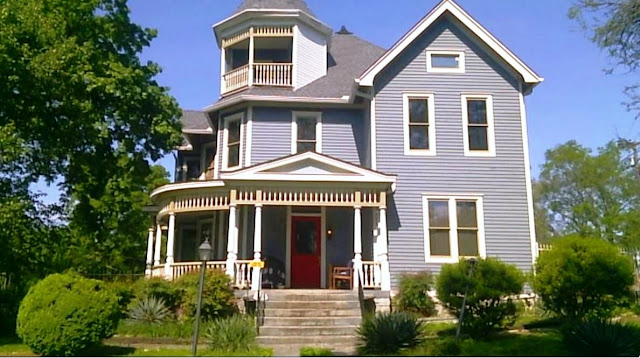 |
| The Daily American, March 19, 1892 |
Nashville awakened this morning, March 11, 2017 to a sweet spring snow. Snow is no stranger to Nashville in March. Nashville weather records reveal that three of the top ten largest snows were in March. The largest one day total was on March 17, 1892 when 17 inches of snow fell. On March 18, there was an additional 4.5 inches of snow. Mark Rose of the National Weather Service tells the biggest weather story of that winter.
St. Patrick’s Day Snowstorm of 1892
Mark A. Rose
Meteorologist
National Weather Service
Old Hickory, Tennessee
Meteorologist
National Weather Service
Old Hickory, Tennessee
On St. Patrick’s Day, March 17, Nashville received the largest snowfall in its history — 17 inches — a record which still stands today. The snow began around 6:00 p.m. the previous evening.3 Very little accumulated until after midnight.2 The snow continued into the afternoon.3
Said a Nashville Banner article, which appeared on page eight on the day of the snowstorm, There has been much complaining, but there is consolation in the fact that the same snow that makes walking disagreeable, is enriching the wheat, fertilizing the land, and holding back the fruit until danger of frost is past. Over these things the farmers rejoice.
Nashville’s street cars had been “snowed under,” and did not run.3 Suburban workers had to walk to town.3 Morning trains were delayed.3 And the “arteries of trade” were clogged.3 Mailmen didn’t leave the post office on their rounds until 10:00 a.m.3 Many letters weren’t delivered until late afternoon.4 A freight train from Chattanooga ran upon a freight engine, derailing two cars, at the Winton community (near Murfreesboro), and did not get in until noon.3 A passenger train from Memphis due at 7:00 a.m. did not arrived until 2:00 p.m.3 And members of the Ancient Order of Hibernians in America canceled their annual parade.4
The Nashville Banner that day contained the following anecdotes: In the city the snow seems to be taken good-naturedly. A real estate dealer on Union street has “For Sale” on a huge pile of snow in front of his door, and all about town the snowdrifts along the sidewalks are labeled with such legends as, “Keep Off the Grass,” “Don’t Pluck the Roses,” “The Sunny South,” “Beautiful Spring,” “Come Into the Garden, Maud,” “Mosquito Bars Made Cheap,” “Linen Dusters at Half Cost,” “In Memory of Dixie That is Froze,” and “Where Are the Violets You Promised?”
In addition, the following conversation took place over the Associated Press wire:
Memphis Operator – The snow here is four feet deep.
Cincinnati – You mean inches, don’t you?
Memphis – No, it is up to a man’s knee.
So the winter that almost wasn’t concluded with 21.8 inches of snowfall, and with 21.5 inches of that accumulating in a single month, March of 1892 remains the snowiest month in Nashville’s history.1 The record 17-inch snowfall has been challenged only once. On February 20-21, 1929, Nashville accumulated 15 inches of snow during a remarkable 13-hour period spanning two calendar days.5 The next largest snowfall on record is 9.8 inches, which occurred on February 3, 1886.5
__________
1 National Weather Service. Nashville Monthly Snowfall Table.
2 National Weather Service. Monthly Climate Summary for Nashville, Tennessee for March, 1892.
3 The Beautiful Snow. Nashville Banner. March 17, 1892.
4 O’Donnell, Red. Nashvillians made light of 16-inch snow in ’92. Nashville Banner. March 16, 1982.
5 National Weather Service. One-Day Snowfall Totals of at Least 6″ at Nashville.
Mark Rose, I hope you won't mind my copying your story here. I am afraid it will disappear from the weather service website.




